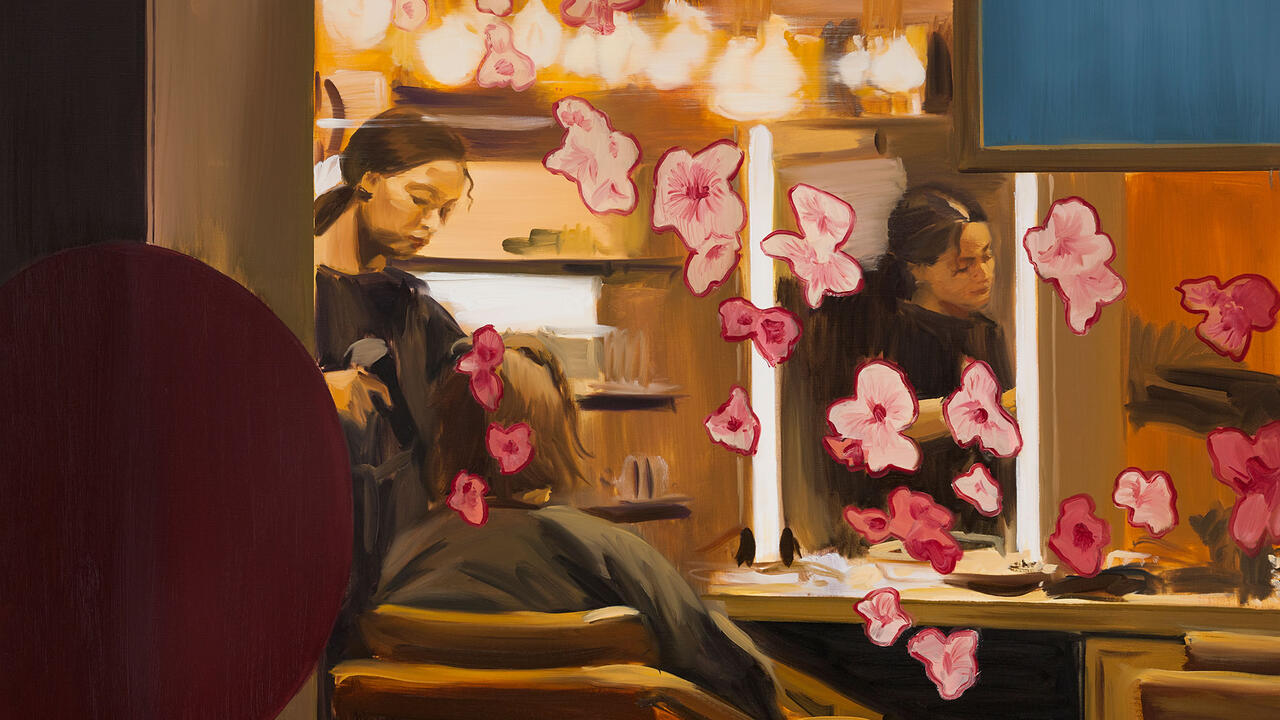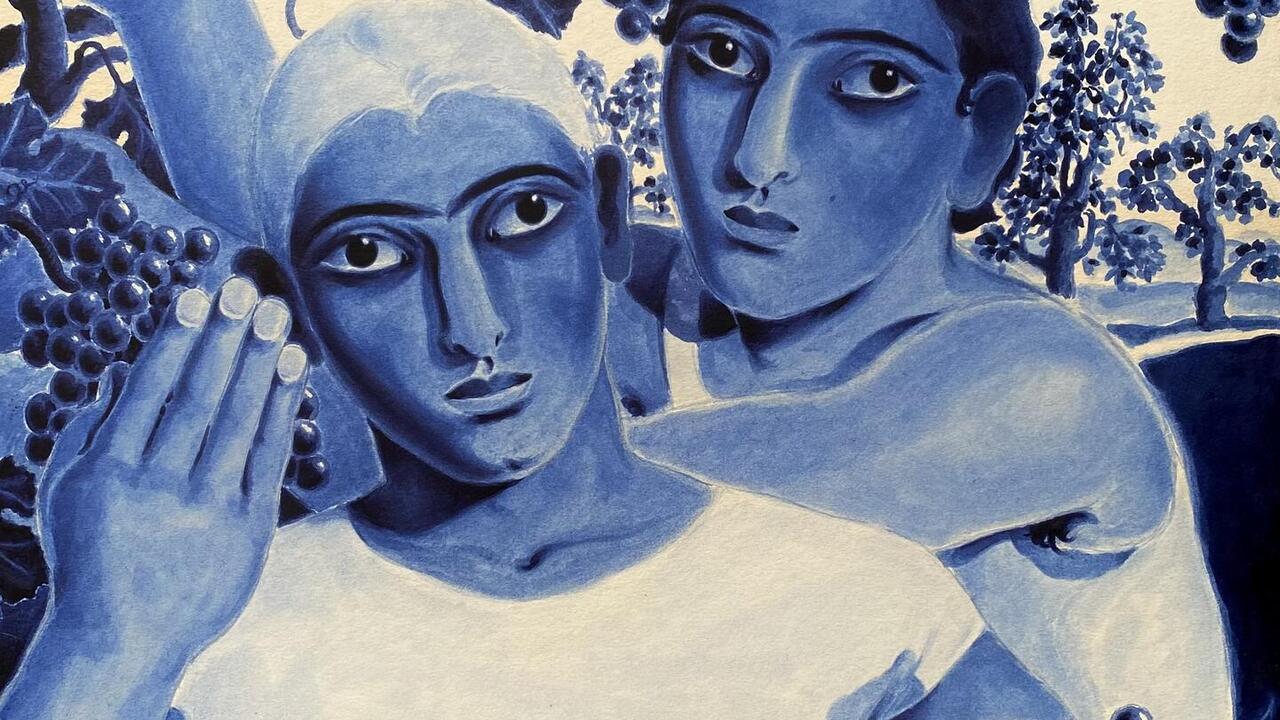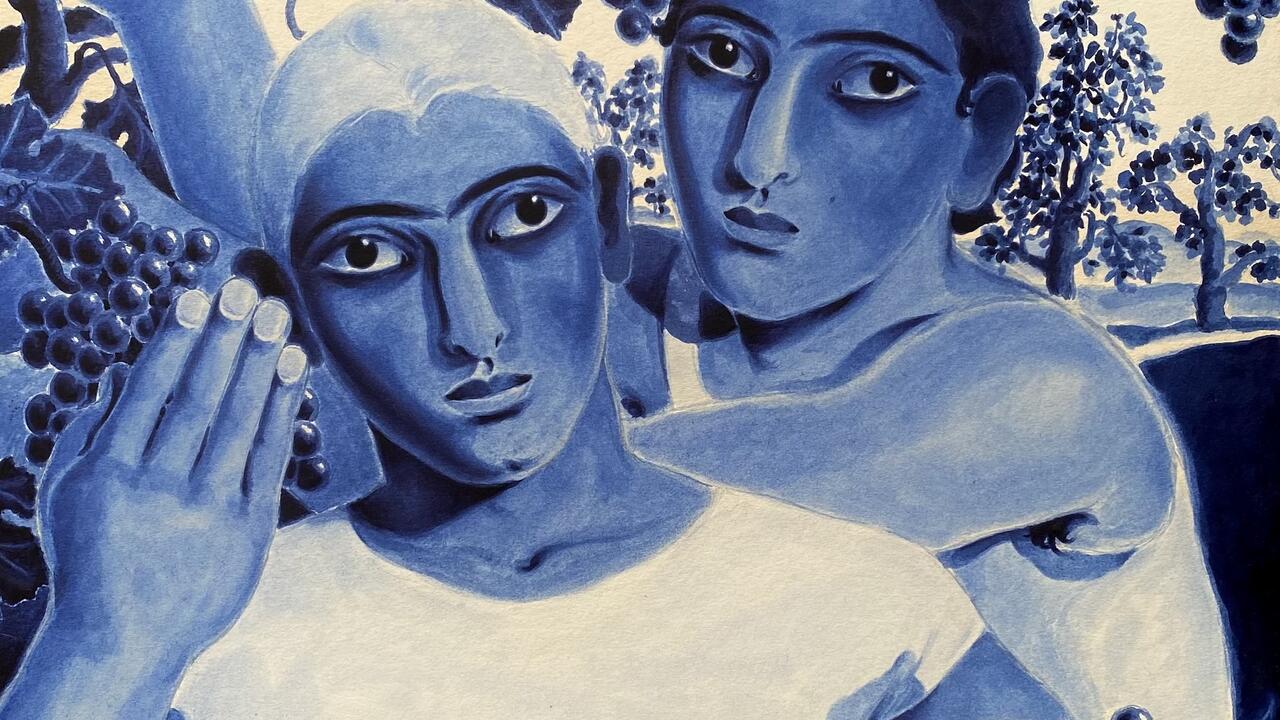Being Curated
Dan Fox invited eight artists and artist groups to reflect on their relationships to curators and curatorial discourse
Dan Fox invited eight artists and artist groups to reflect on their relationships to curators and curatorial discourse


Dan Fox
Second only, perhaps, to the white-hot temperatures of the art market, the rise of the curator has been one of the most discussed developments in art over the past 15 years. The growth of the profession has wrought profound changes on how we think about exhibitions and what institutions can be. It has helped networks of artists to grow, and has shone a light on the overlooked and underappreciated. It has also assumed ministerial power in art-industry war games, and has – in Europe and the US, at least – taken over from television production as the sensible option for nice middle-class youngsters wanting a career in the arts. No other word or phrase from the professional lexicon of contemporary art has leaked so quickly into widespread popular usage as ‘curating’. When it’s not celebrities ‘curating’ your lunchtime sushi box or clothes shops ‘curating’ your summer sock collection, curating is the motor of power and discourse in exhibition-making. For the most part, the conversation about curating has largely been dominated by curators. (The many who freelance as critics have also altered the nature of such basic staples of art writing as exhibition reviews. But that’s another story.)
This does not strike me as the healthiest situation. (Then again, junior curators at New York’s Museum of Modern Art in the 1950s probably thought the same about the omnipotent critics of their day.) Yes, there are exceptions, and yes, I am generalizing. Of course, I’m not the first to have wondered what the implications of the growth of curatorial power are for artists. Curators – like critics – are nothing without art, no matter what the most meta-inclined of curatorial theorists might argue. In 1972, Daniel Buren published a short statement titled ‘Exposition d’une exposition’ (Exhibiting Exhibitions) in the catalogue for Documenta V, in which he complained that: ‘The subject of exhibitions tends more and more to be not so much the exhibition of works of art, as the exhibition of the exhibition as a work of art.’ Buren’s text (in its 1992 English translation) prefaces this survey, for which we asked a small selection of artists to respond to the following questions: how do they feel about their role in the discourses of curating? What do they think about their work being placed in themed exhibitions or biennials, or in the context of new exhibition formats and experiments in display? Are they happy to engage in dialogue with curators when shaping exhibitions, or do they feel instrumentalized, their work put at the service of someone else’s interests? And how do artists who curate – and there are many – feel about their position in relation to professional curators?
Reflecting today on his original statement, Buren still argues passionately against the grandiose excesses of auteur curating and ‘the exhibition of the exhibition as a work of art’. Other responses speak about firm but productive negotiations, or liken their experiences with curators to finely nuanced social encounters, both parties making discoveries about the art work and the porousness of their respective roles. Together, these reflections provide a snapshot of an ever-changing field of relations, one in which, as the saying goes, ‘It’s complicated.’
DANIEL BUREN: EXHIBITING EXHIBITIONS

The subject of exhibitions tends more and more to be not so much the exhibition of works of art, as the exhibition of the exhibition as a work of art.
Here, it is unmistakably the ( ———————— ), headed by ( ———————— ),* that exhibits [expose] (the works) and lays itself open [s’expose] (to the critics). The works presented are strokes of colours painstakingly selected – of the picture that makes up each section (room) in its totality. There is even an order in these colours, for they are enclosed and composed in relation to the design of the section (selection) in which they are displayed/presented. These sections (castrations) – themselves ‘strokes of colours’ painstakingly selected – of the picture that makes up the exhibition in its totality and in its very principle, only make their appearance under the aegis of the organizer, the person who re-unifies art by making it all the same in the casket/screen he prepares for it. It is the organizer who deals with – and screens – all contradictions.
So it is true that the exhibition weighs in as its own subject, and its own subject as a work of art.
The exhibition is clearly the ‘enhancing receptacle’1 [receptacle valorisant] where art not only plays out its part but is also engulfed. For if, even yesterday, works were revealed thanks to the Museum, nowadays they are no more than so much decorative gadgetry helping the Museum to survive as a picture or tableau, the author of which is none other than the very organizer of the exhibition. And the artist hurls himself and his work into this trap, because the artist and his work are powerless, by dint of artistic practice, and can do no more than let someone else – the organizer – do the exhibiting. Whence the exhibition as art tableau, and as the limit of art exhibitions.2
In this way, the limits created by art itself, to act as a bolt-hole, turn against it by imitating it, and art’s refuge, once formed by its limits, turns out to be the justification, the reality, and the grave.
September 1992
* New edition of a text with the same title published on the occasion of Documenta V in 1972. Always topical, the exhibition and organizer of your choice can be placed in this spot.
1 Postface, Michel Claura, 18 Paris lV 70, Marcel Broodthaers, Michel Claura and Robert Barry, International General, 1970
2 ‘Rahmen’ in Position Proposition, Museum of Mönchengladbach, 1971
41 years later! After accepting ‘Exhibiting Exhibitions’ for the Documenta V catalogue in 1972, Harald Szeemann told me that my text was ‘intelligent but having very little to do with the reality’! However, even if he was then correct (which I don’t believe, because if I identified the problem it’s because it already existed or was just emerging), it sooner or later became an obvious reality, proving that my analysis was not just a theory stemming from my imagination. That said, few organizers since Szeemann – not least the ones who consider themselves ‘artists’ – are anywhere near as talented as he was. Szeemann was absolutely the inventor of this new tendency in the art world; the organizer as the real artist in the show or, at least, the one above all the other participating artists.
Since that time, in terms of group exhibitions, to my eyes everything has come adrift. It’s almost grotesque to see how exhibitions are increasingly becoming opportunities for an organizer or a curator or whoever to write an essay which usually has nothing to do with the artists invited, but concerns only his or her philosophy about art and society, politics or aesthetics. Exhibitions focus increasingly univocally on who makes the show, and we can see that the artists chosen to ‘illustrate’ his/her theory are mainly the same from one exhibition to the next. So the very same works are, show after show, illustrating extremely different themes or theories, without any problem. In fact, and this is quite reassuring, no one cares – starting with the artists themselves – about the discourse produced by these exhibition organizers. The only ones who pay attention to and speak about the organizers are the organizers themselves, or art critics who don’t speak about the artists in the exhibition so much as about the organizer, perhaps dreaming secretly to be an organizer of exhibitions themselves.
Many artists are content to be invited to take part in a show, without criticizing either whoever invited them or the farcical situation in which they have become mere objects. On the one hand, it’s because their concern is to be invited regardless of the conditions, making sure that this is primarily important for themselves and not realizing that, little by little, their works are melting into a vague soup that is becoming more and more indigestible. I still dream (if I didn’t, then I would be completely depressed) of a general uprising!
Daniel Buren is an artist living in France. Recent exhibitions include ‘Excentrique(s), work in situ’, in Monumenta 2012, Grand Palais, Paris, France (May 2012); and ‘Electricity Paper Vinyl… works in situ’, Bortolami Gallery / Petzel Gallery, New York, USA (January 2013). In September, he will have an exhibition at Instituto Cultural Cabañas, Guadalajara, Mexico.

MARC CAMILLE CHAIMOWICZ
Dear Dan,
A time was such when curators preferred the inanimate … They were more at ease with objects, things, art works … than they were with people. Artists were just as suspicious … and, more at ease with a drink, were often aggressive. At once both patronising yet over reverent … the curator’s positioning towards artists has long been one of ambivalence … in their turn artists felt misunderstood – were often arrogant or paranoid … or both. Small wonder then, that there was a common mistrust …
Performance went some way to redressing this … of necessity – we were, after all, working in real time – and there was nowhere to hide … it may indeed have precipitated a climate change … because some form of dialogue between artists and curators, generally with some urgency, had now become a necessity. Of course, artists still drank too much, but now as often than not in the company of the curators … and so began the realization that we might yet, after all, be sharing a common agenda … So it is no mere coincidence that this key word, ‘performance’, should now feature in both the titles of two current Tate exhibitions in which my work is included: ‘A Bigger Splash: Painting after Performance’ at Tate Modern, London, and ‘Glam! The Performance of Style’, at Tate Liverpool.
Is it not curious that the showing of my more anarchic installation Celebration? Realife Revisited (1972–2000), in Liverpool, should have arisen from the more traditional route of a simple loan request …? My contributions to the Tate Modern show – Jean Cocteau (2003–12), J&J and After Image (both 2012) – were, however, the result of a protracted yet focused dialogue with the curators which, in turn, shaped my contribution and procured work thematically specific to the exhibition. So, whilst the axis of the curator curating work from the artist remained this was nonetheless symptomatic of a new sensibility which now took one from awkward imbalance to greater parity …
You may recall a brief exchange we had recently in London. Well, I am now writing from Paris where I am preparing for the exhibition we spoke about, to be held at the Musée d’Art moderne de la Ville de Paris/ARC this autumn. I have been invited to be artistic director for DECORUM and I shall be working principally with the curator Anne Dressen and architect Christine Ilex on the staging of more than 100 carpets, rugs and tapestries by modern and contemporary artists …
Ranging from the ‘Primitive’ to the ‘Conceptual’, these are to be displayed in a variety of ways … I elaborate as the resultant show will emerge from a uniquely close collaboration between curator, artist and architect … I shall be dealing with issues – once deemed outside of an artist’s remit – as diverse as the means of display, patternation and the use of wallpapers, the designing of motifs for Axminster, décor as back-drop, the mapping of a floor plan and so on. And, given that much of the work to be shown oscillates between fine and applied arts, between high and low culture, a degree of slippage will surely mirror emerging shifts of museological emphasis?
… Initially somewhat tentatively, we are now, with greater aplomb, developing a shared language by which to elaborate on a possible scenography, and it seems that as we move from the mechanistic to the complicit, so we may be heading towards … possible Baudelairean harmonies … I hope this goes some way to meeting your request, and meanwhile look forward to seeing you soon,
Amicably yours,
Marc Camille
Marc Camille Chaimowicz was born in postwar Paris, France, and lives and works between London, UK, and Burgundy, France. His installation Celebration? Realife Revisited (1972–2000) is currently included in ‘Glam! The Performance of Style’ at Tate Liverpool, UK. Forthcoming exhibitions include ‘En Suspension…’, curated by the artist, at FRAC des Pays de la Loire, Carquefou, France (April 2013). In February, Madame Bovary by Gustave Flaubert, a work by Marc Camille Chaimowicz, was published by Four Corners Books.
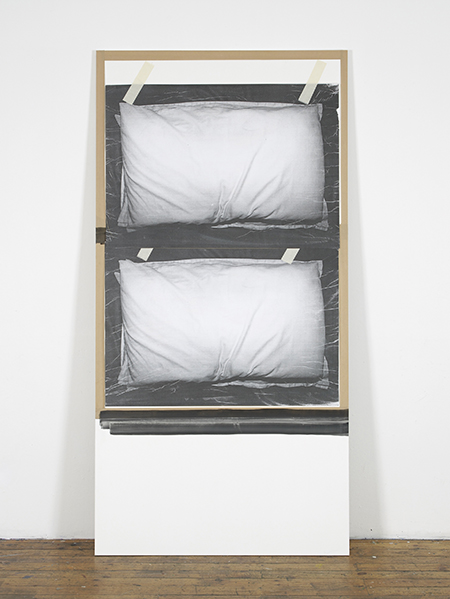
ED ATKINS
My experience, which is conspicuously limited, is that there can be a great element of collusion in working directly with a good curator: something a little giddy and excited and very much in secretive, esoteric accord. The chance for lots of thrilled affirming and urgent exchanges that, publicly, probably manifest as a kind of obscure fraternity – an expression of faith in the work and in the possibilities of the relationship and in the wider contexts and discourses that it might induct or contribute to.
Curating, it seems to me, might best be understood as a kind of relationship – a friendship – that is both committed and somehow capricious enough to be, in any product of the relation, altruistic. There’s a very real possibility that artists and curators are the same and the other to one another.
A scene of hospitality maybe warrants analogy here, where the host and guest are productively confused. Here, I suppose that the curator begins in the role of the host, and the artist in the role of the guest – though I wouldn’t say that with any certainty. The institution or gallery, or wherever the work is housed, is the curator-host’s home. As the artist-guest, I don’t know whether I need to take my shoes off or use coasters under drinks – or whether I can ask for a hard drink – or avoid conversations about politics or what. The curator-host, however, doesn’t really know the ‘my’ (such as it is authoritative) of my work, which is paradoxically a precondition of their hosting, so it’s more than likely that the two roles switch and continue to do so in the process of making the show. In lieu of the third party: the audience.
So this relationship and its slippages might, in this idealized mode, do something pretty much occult to the identities of both the curator and me, however temporarily – insofar as they are confused, they are the same and they are so very different to one another as to be profoundly incoherent.
In working directly with an artist – rather than at a remove with simply the work of an artist – the curator, I think, might confront a conspicuously alien aspect of their own identity and, at least partially, actually be the artist – no doubt in all their banality and anxiety.
For myself, the confusion between a curator and me can be hugely productive. And while my vanity is certainly well served in the situation, I would say that it’s as close as I get to the mysteries of collaboration – which is to say, in this context, that it doesn’t feel like collaboration, because there’s not really a consistent division.
I should say that I’m predominantly thinking of my gallerists when I talk about this kind of curatorial encounter. Certainly the relative long-termism of that relationship presents a marked difference to a comparable institutional contact.
Still, there have been several other experiences of wonderful equi-valence, in my brief time as an artist, that makes me think that, despite any quixotic sensation about the above, it’s not actually as rare as a more cynical, antipathetic telling might have you believe. Some of my very best friends are curators.
Ed Atkins lives in London, UK. Recent solo projects include those at MoMA PS1, New York, USA, and Chisenhale Gallery, London. In August, he will present a solo exhibition at the Kunsthalle Zurich, Switzerland.
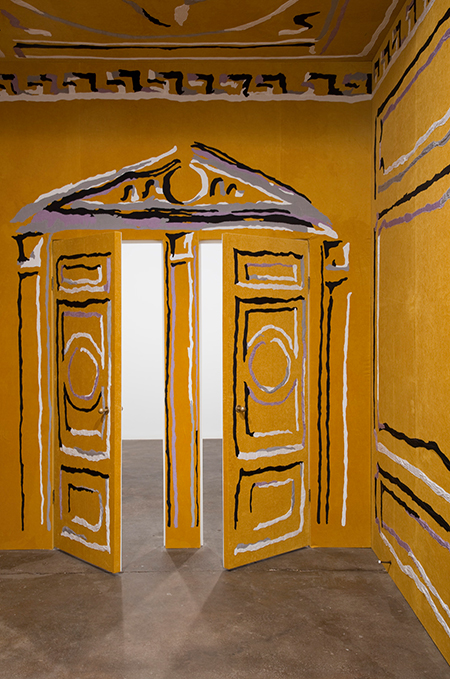
NICK MAUSS
Nobody likes the curator as functionary or octopus, pushing artists’ profiles through the various templates of the art system. But the emergence of this figure cannot have taken place without the consent of artists, their dealers, apparent critics, collectors, etc. and by an abdication of responsibility, a loss of glamour, even, on behalf of all these parties – while promoting an illusion of increased sparkle. The question now is how willingly all of us answer to and over-emphasize the demands of an attention economy.
Or, we could work slowly, deliberately, giving licence to indulgence or dissolution, and allow things to come together. What if the frame of an exhibition could be a passageway, a transitional, jarring, erotic space, a left-over velvet applique antechamber in a cosmetics emporium, a pre-echo that shudders through algorithms of wanting: Marcel Broodthaers > Sturtevant > Madeleine Vionnet? What are other ways of relating things, of proposing counter-constellations, of making problematic correlations? These are the questions I asked myself as I worked very closely and with great pleasure with two curators as an artist included in a recent biennial, as a way of making my presence porous within the framework of this particular attention-grab. Something like a presence that also had the intensity of an absence – of self-annihilation. As they opened up the entirety of the museum’s collection to me, and as I navigated through the database, it began to call out different names, to radically affect my paths of search and selection.
I also remember going through the vetting process of one particularly cynical youth triennial, which was managed entirely via email, in order to allow for the filtering of large amounts of data points (masses of recommended names and pdf portfolios) to arrive at a final selection of artists, all under the premise that this was a new and up-to-date way of generating an exhibition: ‘globally’, ‘digitally’. By the time I was invited to participate in the exhibition and to sign off on the image rights to photographs of my own work for purposes of the institution’s publicity, I realized that there was no reason for me to participate in this show, as all the relationships had become flat, entirely interchangeable. I had never met or spoken to any of the curators, I had no idea what the show was supposed to be about, or what it was even interested in being about, and thought it strange that nobody questioned the complete perversion of the exhibition as a possibility to a fully realized bureaucratic travesty.
Self-sabotage as aesthetic.
Nick Mauss is an artist who lives in New York, USA.

TOM NICHOLSON
I have mostly been fairly privileged in having good experiences of being involved in large themed exhibitions or biennials. In the best cases, I’d say that these shows – and specifically their curatorial conceptualization – honours the art work by considering it in relation to a range of intellectual, political and experimental work, inside and outside art. The process of exhibition-making, then, functions as part of the making public of those relations (and the leakage) between the art work and those different kinds of intellectual, political and experimental work. That is something I both welcome as an artist (in that I think art should be part of our wider, collective, public discourse) and also feed upon (those relations in turn flow into my own working and in this way become part of that ongoing generative process that is critical to any artist).
I would not say that I have ever felt as though my work is instrumentalized. Perhaps this is naivety on my part but, in a general sense, I have faith in the nature of the encounter with an art work, in the wildness of that encounter, in the way that the sustained process of attending to an interesting art work is not exhausted or contained by a single framework. Possibly it is simply my good fortune, but the conversations and exchanges I have had with curators in these large-scale shows have been overwhelmingly interesting, usually generous to the work, and generally in tune with the singularity of the work and the demands of that singularity.
At the level of the pragmatics of exhibition-making, my conversations with curators around the physical placement of a work have occasionally been affected by curatorial preconceptions, in a way that I have felt risks flattening the work. In these cases I have simply said ‘no’, and that has been fine. I generally welcome very frank conversations with curators, which are both a happy liberation from Anglo-Saxon forms of reserve about potential disagreement or offence, but also, in the best situations, yield really interesting insights about the work – something that I imagine is the closest that an artist gets to the position of a writer with an excellent editor. In even the most trusting and intimate versions of this relationship with a curator, I have never the lost the sense of being able to simply say ‘no’ to a suggestion, so there is certainly a limit in that relationship I would always maintain (and I have, at least in my experiences, always been able to maintain this limit in a very friendly way).
On the other hand, in the published written responses to themed shows or biennials, I think there is often a subsuming of the art work to curatorial authorship. I guess this partly arises from the shorthand involved in the word-length limitations in reviewing. I suspect it is also because writers are sometimes also curators or, in some wider sense, peers of curators, and it often feels like the writing addresses curatorial structures or devices rather than the singularity of art works. On several levels I regard this as a problem, not least in that it flattens what an art work is or can be, the way that art works unsettle our taxonomies and preconceptions rather than illustrating them.
As an artist living in a fairly far-flung place (Melbourne), one of the things I most appreciate about large themed shows or biennials is contact with artists from other places. The artists I have met through these shows have often become very close friends and valued peers, and though we may go many years without seeing each other, the exchanges established by that first occasion of showing together becomes the basis of a very particular and durable connection. Though the first meeting often occurs in an institutionalized context (a museum or a biennial) what is striking to me is that these friendships and exchanges quickly become autonomous. They become part of the conversations, networks, exchanges, generosity and reciprocity that enable artists to keep working, to keep generating, and to do so with a kind of (relative or qualified) autonomy that is (and sorry for the grandiosity of invoking this term) necessary to the strange sovereignty of art works.
Tom Nicholson is an artist who lives and works in Melbourne, Australia. He is a lecturer in drawing at Monash Art, Design and Architecture. His work was recently part of the inaugural Qalandiya International, a biennial event held across a number of locations in Palestine.
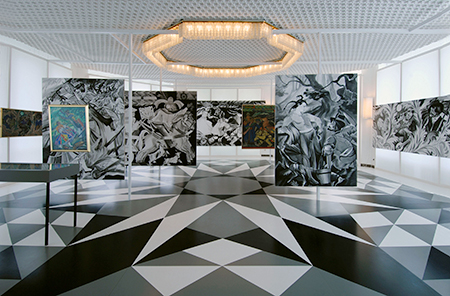
PAULINA OLOWSKA
I like flirting as an artist-curator. With the works I select. With histories and themes. With artists. With exhibition curators. With whom and with what I flirt stems from necessity, or is the natural course of things – it constitutes a key theme of my art. Art historian Claire Bishop once described my artistic practice as ‘direct curatorial’.
Continuing with flirtation as a metaphor, I’d like to talk about the exhibition ‘Olinka, or Where Movement is Created’, held at Museo Tamayo, Mexico City, last year. The show was inspired by the life and work of two artists, Nahui Olin and Dr. Atl, living outside of ‘the centre’, in the idealistic-Utopian world of a Mexican province. Magnolia de la Garza and Adam Szymczyk offered the artists they invited the opportunity to co-create the exhibition.
This joint creativity (flirtation) of curators and artists, as well as of artists and artists, took place on three levels. Firstly, at the level of the creation of new works, or the choice of existing ones from an artist’s output. Secondly, juxtaposing these in an open-ended manner with works selected by the curators from the archive collection. Thirdly, there was the opportunity to work together on the visual aspect of the show, for instance, through collective discussion of the most suitable hanging of works in relation to each other. What I mean to say is that the curators were in a permanent creative dialogue with the artists, and the exhibition was ‘open form’ up until the very last moment. The process of developing the exhibition was dynamic and extremely fascinating. This scenario also made the artists look at the show in a more synthetic way. They were not focused only on their own work, or the works in the immediate vicinity of their work.
To me, it doesn’t matter who’s who – if an artist is an artist, if a curator is a curator, if a curator is an artist, or the other way round – this is an old and very constraining narrative. I opt for a new narrative, one that sees such categories loosely. It is my experience that the most rewarding practice is one that involves collaboration switching traditionally ascribed roles in order to navigate exhibition territory seamlessly, and charting the borders that are reached in the process of development. I hope that this is the future of art and exhibition-making.
Paulina Olowska lives in Raba Niznam, near Krakow, Poland. ‘The Method’, an exhibition that she devised, is currently on view at Studio Voltaire, London, UK, and in June she will have a solo show at Kunsthalle Basel, Switzerland.

SLAVS AND TATARS
It can’t be oysters and foie-gras every night, can it? Otherwise, we risk coming down with what the French suffer each new year: a crise de foie (‘crisis of the liver’), only in this case perhaps the homonym – a crise de foi (‘questioning one’s faith’) – would be more appropriate. With curators – as with lovers, friends or accountants for that matter – we must mix it up a bit. Some nights just call for plain rice and yoghurt.
While the gilded discourse surrounding the role of the curator appears increasingly sophisticated, if not at times outright esoteric, it also comes at the expense of some brass tacks. In these oft-amnesiac times, we tend to be in the arrière-garde rather than the avant-garde. If anything, we seek more rather than less engagement from curators. Is it a coincidence that the heightened logorrhea in curatorial discourse coincides with an uptick in the transactional? Instead of entertaining a discussion about the ideas driving an exhibition – how a particular work fits the given proposal or how the context provides a new understanding of the work, perhaps even steering it to new frontiers – we are too often asked to move immediately to questions of logistics. Transport, budget, schedules, etc., are the standard fare before even these are cast aside in pursuit of the next pressing engagement. Is it because such responsibilities strike most as rudimentary, low-hanging fruit, not worthy of the otherwise noble aspirations of curators, museum staff, administrators, gallerists and artists alike?
The actual hanging and scenography of an exhibition are as integral, if less seductive, as the more immaterial discussions about representation, engagement or agency. We find The Menil Collection staff’s debates (not to mention hermeneutic implications) over the height to hang a picture – Jermayne MacAgy’s famous line that the centre should ‘hit at the tits’ – as compelling and relevant as our more abstract research, into say linguistic hospitality or mystical substitution, even if we do not paint nor have any intention to. Nearly four decades ago, the radicalism of Heiner Friedrich’s original dictum for the Dia Art Foundation – ‘one artist, one space, one work … forever’ – still holds up against the more daring ideas put forward today across innumerable periodicals and symposia.
Due perhaps to our own relatively late arrival to art after a decade spent in other fields, from public-sector strategy to media and graphic design, we do not have any shame in understanding the stakes involved as artists. We can’t help but shake the feeling that we are all – every single one of us, from teacher to trapeze artist, financier to filmmaker – in the service industry. So instead of a puerile pitting of the curator versus the artist or vice versa, we believe it would be better to ask: ‘Service to whom? To what?’ For Slavs and Tatars, the service is to our region, Eurasia; to the public; to each other. But it is also, crucially, to the integrity of the commission and idea behind a project. Most of our work exists largely thanks to the commission of the curator and the accompanying institutions. Given the collective nature of our practice, we look to curators as we do to academics, gallerists and installation crews among others, as integral partners in an almost alchemical process, that allows for a series of thoughts to resonate spatially, formally, intellectually and affectively.
Slavs and Tatars’ ‘Behind Reason’ is on view at the Künstlerhaus Stuttgart, Germany, until 6th May and their ‘Friendship of Nations: Polish Shi’ite Showbiz’ opens at Presentation House, Vancouver, Canada, on 12 April and runs to 26 May.

W.A.G.E.
W.A.G.E. (Working Artists and the General Economy) was founded by a group of artists, performers and independent curators who were brought together by a common sense of institutional exploitation. Independent curators – along with other cultural producers – provide a workforce within a multi-billion dollar industry from which others profit greatly. Like artists and performers, independent curators are often not considered as wage labour or subcontracted labourers, and relegated to fee categories that bear no compensatory relationship to the work we’re asked to provide.
Last year, W.A.G.E. was invited by Tirdad Zolghadr to present a workshop with his graduate students at the Center for Curatorial Studies at Bard College, Annandale-on-Hudson. Together with the class, we made a list of curatorial responsibilities and duties:
— Research and development: seeing exhibitions, archival research, reading, email correspondence, studio visits and site visits.
— Conceptualizing an exhibition: proposal writing and commissioning art works, as well as working with artists to produce them.
— Fundraising: maintaining or cultivating donor relations, both socially and through submitting written proposals.
— Legalities: facilitating permissions, loans, insurance, contracts and visas.
— Mounting an exhibition: overseeing exhibition design and architecture with fabricators, writing and preparing wall texts and labels, organizing public programming, public relations, essay writing and catalogue design for publication.
— Ongoing administration: oversight, invoicing, designing and maintaining budgets, arranging shipping and managing labour from installation to de-installation.
If independent curators complete even half of the work on this list, then curatorial fees are symbolic figures. Since we have accounted for the actual labour being performed – the kind of labour that in any other context would be remunerated unless it were an unpaid internship – we are able to quantify and valuate it in terms of real wages. This should be done either in relation to other comparable forms of labour, or it could be a wage or fee calibrated to the cost of living.
The rise of the independent curator has an impact upon artists because it represents another mouth to feed from exhibition budgets. If artists and curators are pitted against each other in the battle for compensation, we have been divided; and if curators don’t support artists by writing equitable artist fees into their budgets, we will have been conquered by a system that inherently denies the value of all cultural labour.
W.A.G.E. is an activist group based in New York, USA, that focuses on regulating the payment of artist fees by nonprofit art institutions, and establishing a sustainable model for best practices between cultural producers and the institutions that contract their labour.











